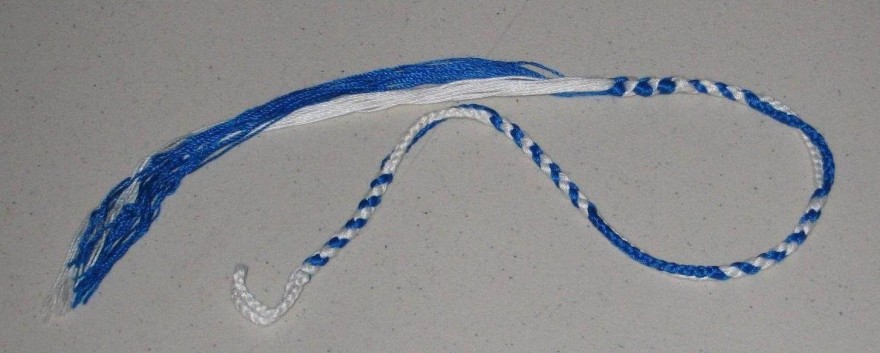Torah Pearls – Ki Teitzei – Deuteronomy 21:10-25:19 – Nehemia Gordon & Keith Johnson
How is the rebellious son cursed by hanging on a tree? Did Keith break Torah by shooting the neighbour’s trash can conquering dog? What is the relationship between the verses regarding ploughing, sowing, and weaving material? Is there a secret Methodist formula to making tzitzit? What does it mean to come into the presence of YHVH? What exactly is a “mamzer” and “the price of a dog”? In Malichi 2:16 who “hates divorce”?
Nehemia Gordon – Ezekiel 18 & 33
Join us for this year’s Tanakh Tour of Israel!
[sc_embed_player fileurl=”https://truth2u.org/wp-content/uploads/Audio/Truth2U%20-%20Nehemia%20&%20Keith%20-%20Ki%20Teitzei.mp3″ autoplay=”true” loops=”true”]
[wp-post-slider]





Sherri’s comment earlier made me consider the oils in Linen and Wool rather than a frequency issue alone. So I did some research…
Starting with Wool…
I am aware of product called Lansinoh. They give it to you in the hospital after you have a brand new little one. Lanisnoh’s single ingredient is 100% Lanolin… ie the waxy substance secreted by sheep (wool grease).
Lanolin creates a waterproof layer in the wool of the sheep (so they don’t shrink, just kidding, but maybe it’s true). It’s purpose is to protect sheep from the elements. Lanolin thus contains 8,000 to 20,000 different types of lanolin esters, alcohols, cholesterols, etc. that keep the skin of the sheep healthy and secondarily our skin when we wear clothes made of wool. It also keeps the sheep from becoming too heavy due to external water and protects them from dirt. Putting it on your clothes is like using a stain stick… but better.
The reason the hospital gives you lanolin of a high grade is because it is awesome in treating wounds (and eczema), yet safe for little ones to consume as naturally feeding new babies requires skin to skin contact.
Lanolin is similar to our own defense mechanism for hydration and the prevention of water loss through the skin (would be good in the desert to add to that ability, especially in dry winters). Putting lanolin on the skin creates a barrier against drying air and has effects of up to 72 hours after application, protecting the skin and keeping it smooth and moist. Wearing clothing naturally covered in Lanolin would perpetuate this effect. It also constantly applies a small amount of healing and protecting oil to your skin as your movements and create friction or rashes throughout the day.
Sherri’s comment earlier made me consider the oils in Linen and Wool rather than a frequency issue alone. So I did some research…
Starting with Wool…
I am aware of product called Lansinoh. They give it to you in the hospital after you have a brand new little one. Lanisnoh’s single ingredient is 100% Lanolin… ie the waxy substance secreted by sheep (wool grease). Lanolin creates a waterproof layer in the wool of the sheep (so they don’t shrink, just kidding, but maybe it’s true). It’s purpose is to protect sheep from the elements. Lanolin thus contains 8,000 to 20,000 different types of lanolin esters, alcohols, cholesterols, etc. that keep the skin of the sheep healthy and secondarily our skin when we wear clothes made of wool. It also keeps the sheep from becoming too heavy due to external water and protects them from dirt. Putting it on your clothes is like using a stain stick… but better.
The reason the hospital gives you lanolin of a high grade is because it is awesome in treating wounds (and eczema), yet safe for little ones to consume as naturally feeding new babies requires skin to skin contact.
Lanolin is similar to our own defense mechanism for hydration and the prevention of water loss through the skin (would be good in the desert to add to that ability, especially in dry winters). Putting lanolin on the skin creates a barrier against drying air and has effects of up to 72 hours after application, protecting the skin and keeping it smooth and moist. Wearing clothing naturally covered in Lanolin would perpetuate this effect. It also constantly applies a small amount of healing and protecting oil to your skin as your movements and create friction or rashes throughout the day.
O.k. so Linen…
Linen is made from flax. Flax oil is known as flaxseed oil or more commonly linseed oil. These guys are covered in Omega-3 fatty acids. Linseed oil does indeed counter Lanolin as it is a DRYING oil and not a moisturizing one. Drying oils harden in oxygen. Linseed is what is responsible for hardening varnish, etc. As a result of the hard nature of linen, it is not elastic, as we know wool is. It resist shrinking as a result. Linen can also be made into linen yarn.
Linseed also is edible as well. Linseed is triglyceride.
The wild thing is that fresh linen and linseed oil can be a problem as they can spontaneous combust (fire). This occurs with mummies wrapped in linen and sealed tight or in the unfortunate case of individuals stacking rags soaked in linseed oil. Fresh linen and linseed oil need a slow and steady amount of air to remain in a stable state. Hardening a large surface area of stagnate oils quickly would create heat as the process involves energy. Keeping them in solid form perpetually and gradually or storing them properly in their liquid state is essential.
Linen is great for clothing and sheets because it is dry and it does keep water loving molds and things at bay.
So why not mix…
It is possible that insulating the airing/breathing process of fresh linen (covered with its natural oils) by coupling it with waterproofing, barrier creating lanolin might be a bad plan as heat is created and then maintained. This danger would probably dissipate over time. There might be a major problem when weaving or storing it. Basically, linseed/fresh linen and its oxygen state and temperature should be considered and monitored carefully.
The opposite would also be an issue. If lanolin/wool grease is a moisture barrier and linen/linseed oil harden things are moist. This bit counter productive. You are damaging both fibers. As the least possible consequence, you are wasting both time and resources to replace damaged fibers.
The wool needs its oils to maintain its waterproofiness and I am assuming this makes it stronger and more resilient. The oils in the linen would dry them out weakening the garment.
Linen oil needs a steady flow of air to remain in a cool and stable, the oils in wool could prevent this. Over time the linen would break down (probably would not completely ignite, but it could negatively impact this natural reaction). The lanolin could also prevent the linseed oil from drying out and becoming completely stable in the first place. It is the dryness of linen that makes it mold resistant, lanolin would keep it from being completely dry.
We don’t think of clothes as chemicals and molecules, but they are. There may be other reasons not to mix as well due to their chemical makeup as this was just quick research.
I cannot believe that the Mal 2:13-16 is talking about multiple wives and concubines these issues are regulated by Mishpatim (Judgment) from YHVH’s Throne!
are you meaning to say YHVH regulates sin in his Torah?
Are all our fathers this man discribed in Mal 2:13-16
Did YHVH cause david to be this man by giving him king Shauls wives?
Exo 21:7-11
tells us if a man takes a second wife he must not remove the rights of marriage from the first wife
these rights are
1)do not diminish her food
2)do not diminish her clothing
3)do not diminish her right to sex and therefore reproduction
Mal 2 clearly tells us that the issue is ”Godly offspring” not been made by this woman which means the Husband has not upheld her sexual rights as is clearly defined in Exo21:7-11
The Torah is not a Buffet all of it stands even the stuff that makes us moderns cringe!
To remove/disagree with anything Torah says is called rebellion.
regarding the mixing of wool and linen:
Certainly, the properties are opposite as explained nicely by STDS Just adding to it that the frequencies are positive and uplifting of each material, but eliminating each other when mixed. That means the positive and uplifting frequency of wool would be offset by the linen or visa versa. Amazing discovery in modern science but known aka obeyed by any bible follower for millennia.
George, what do you base this on?
Jono, it was published years ago (probably still accessible online) called studies of frequencies in materials (?). I was amazed when I read it. Not only had linen a very high aka positive frequency but also helped by radiation. Wool had a similar high frequency, but when interwoven with linen then the frequency was closed to nil, similar to polyester. However, mixed with cotton didn’t have such a dramatic effect.
Likewise, the study of different foods. An atheist used dissolved food to fertilize plants and recorded his results. For us believers it was exciting to notice that all clean food had positive effects on the plants and all unclean negative effects.
I’d love to see the original study if you can find the link. I’ve always heard this quoted but never backed up.
Sorry bro, I don’t have the original anymore, but the following website should provide some information and reference.
http://www.lifegivinglinen.com/linen-study.html
Enjoy the reading.
Shalom Alecheim!
Jono, did you read the articles? They refer to the scientific papers.
Shalom Alecheim!